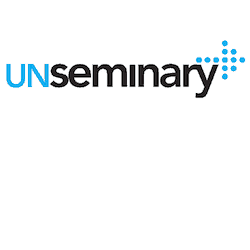
by unSeminary: Welcome to the unSeminary podcast. I’m excited to be talking with Michael Volbeda, Executive Pastor of Ministries at Brentwood Baptist Church in the Nashville, Tennessee area. Brentwood went from two to four campuses in 2014 and has since grown to eight locations. As time went on, the church realized it was operating as if it still had only two locations to manage.
Michael is with us today to talk about how Brentwood’s sudden growth forced it to restructure and develop a new way to align its campuses while allowing for customization.
Find the right model for your church. // Many multisite churches have a video venue for their campuses, but that model didn’t fit what Brentwood was trying to accomplish. After researching what other churches were doing, they decided a live preaching model resonated with them best. Rather than having a franchise/cookie cutter structure for sites, their goal was to allow each campus to have a different name and feel, which were chosen to reflect the communities they were in. In this case, Brentwood Baptist is the “parent organization” but at each campus they offer as close to a customizable experience as they can.Maintaining alignment. // There are certain aspects that all campuses hold in common, such as the alignment of the weekend messages. The preaching team meets for a retreat and the sermon calendar is planned in advance. Theological research and background info is provided for sermons, but then campus pastors can take it in whatever direction they want to based on what fits their congregation. Each Monday, all eight campus pastors meet to talk about the upcoming service and share how they are moving forward with the message as well as hone their craft together. Balancing alignment with customization. // Brentwood has maintained a strong alignment across its campuses, but they also allow a fair amount of creativity at each site. Working toward alignment among the different locations while remaining open-handed to allow customization is a tension to be managed. This is what ultimately led to some restructuring as Brentwood realized they were still operating like they only had two campuses instead of eight. After clarifying their mission, vision and values, they created a new approach to strategic planning and ministry alignment that they call OKRs, which comes from the book Measure What Matters by John Doerr. OKRs stands for objectives and key results. What are the most critical things to focus on? // Of all the things a church could be doing, the way to start is to ask what items are the most mission-critical and important. These things begin to help you understand what is an objective. Set some very clear objectives of what you want to accomplish. Then lay out specific key results that you can measure along the way. Drive all activity and focus toward those things. Brentwood has a 5 year vision to have: 500,000 gospel conversations, 10,000 disciples making disciples, and 100 healthy congregations (not campuses). Break down each of these huge objectives bit by bit as an overall organization, and allow campuses to break them down further based on their specific community challenges and needs. Brentwood, for example, realized they needed a better training process for gospel conversations; people needed to understand and see themselves as missionaries where they live, work and play. So that helped them to take their next step and put some dates on that key result.Helping the church change direction. // Setting up OKRs and applying dates to the key results helped Brentwood to hold themselves accountable. Each campus came up with their own version of unique ways to engage their congregation to get involved. Churchwide OKRs, campus OKRs and then individual OKRs developed by the staff helped everyone to row together, and the whole organization was able to pivot as a result. OKRs also were integrated into the Brentwood staff’s performance reviews and were a regular part of staff meetings. They helped people prioritize work for the week or month. Brentwood uses a review system three times a year as a big part of the conversations on what is being achieved in each location.Rethink and adjust paths. // If you’re behind on your key results, or something unexpected happens (like a pandemic), the benefit of the OKR approach is that you are able to reshuffle, tweak, and adjust the key results. The objectives of the church stay the same, but key results can be changed to take current conditions into account.
You can learn more about Brentwood Baptist Church at www.brentwoodbaptist.com. To see a sample of Brentwood’s OKRs, download this document.
Thank You for Tuning In!
There are a lot of podcasts you could be tuning into today, but you chose unSeminary, and I’m grateful for that. If you enjoyed today’s show, please share it by using the social media buttons you see at the left hand side of this page. Also, kindly consider taking the 60-seconds it takes to leave an honest review and rating for the podcast on iTunes, they’re extremely helpful when it comes to the ranking of the show and you can bet that I read every single one of them personally!
Lastly, don’t forget to subscribe to the podcast on iTunes, to get automatic updates every time a new episode goes live!
Thank You to This Episode’s Sponsor: Carey Nieuwhof
Surrounding yourself with other high capacity leaders is so important right now. When you’re well connected, you can put meaning to content and make well-informed decisions.
Carey Nieuwhof created The Leader’s Circle in March 2020, an inner circle of high capacity leaders who have direct access to him and to one another. If you want to stop leading alone and start leading together, apply now to join The Leader’s Circle.
Source: Multisite Alignment by Leveraging Objectives & Key Results with Michael Volbeda

